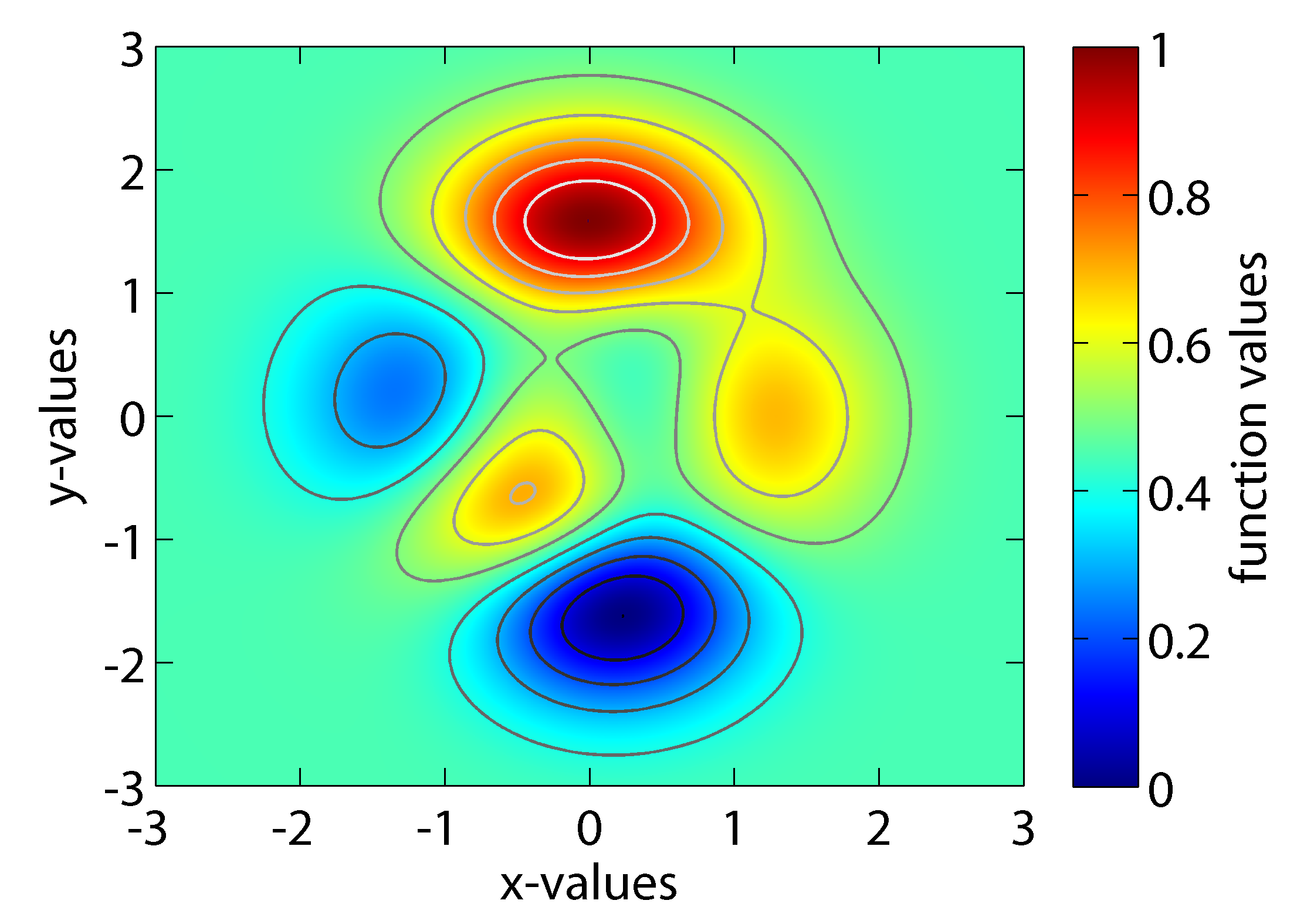

Except as noted, function signatures and return values are the same for both versions. The inverse of the three trigonometric functions listed above Call signature: contour( X, Y, Z, levels, kwargs) contour and contourf draw contour lines and filled contours, respectively.

The table below lists which functions can be entered in the expression box. Each contour line is shown in an X-Y plot and. The plot contains a number of contour lines.
CONTOUR PLOT UPDATE
To update the function that the graph is showing, enter the new function in the input box, and click "update". Contour plots portray data for three variables in two dimensions. You can see how the contour lines equate to the colors in the key just below the graph. By default they are set to (-100,100) and 21 respectively, so this means that the displayed contour levels will start at -100 and go up to and including +100 in intervals of 20. You can change which values the contour lines should display by tweaking the "Range of contour levels" and "Number of contour levels" sliders. There's nothing special about which contour lines are displayed, it's just a matter of choice. This is because you are looking at part of the graph that is very steep and a small change in x or y will have a big effect on the value of z. You might also notice that when you have many contour lines close together, if you go slightly off the line, the z value quickly deviates from the line's z value. See how the z value always stays the same. ContourPlot has attribute HoldAll, and evaluates the f i and g i only after assigning specific numerical values to x and y. ContourPlot treats the variables x and y as local, effectively using Block. Try picking another contour line and follow it with your mouse. At positions where f does not evaluate to a real number, holes are left so that the background to the contour plot shows through. We will look into examples and implementations of the Matplotlib contourf () function. They are tools for doing multivariate analysis and visualizing 3-D plots in 2-D space. Level plots are also termed Contour Plots. Because along this line, z always equals zero. The contourf () function in the pyplot module of the matplotlib library helps plot contours. So, that explains why we see a contour line along the line x = y. You should see in the sidebar that the (x,y,z) indicator displays (2,2,0). So if x = 2, and y = 2, z will equal 4 - 4 = 0. contour( Z ) creates a contour plot containing the isolines of matrix Z, where Z contains height values on the x-y plane. Each point also has a z value which is calculated by plugging the x and y values in to the expression shown in the box.

In the demo above, every point in the graph has an x and y value. Contour lines aren't just limited to giving us info about mountains though, they can help us visualise a surface described by a mathematical function. If array-like, draw contour lines at the specified levels. If an int n, use MaxNLocator, which tries to automatically choose no more than n+1 'nice' contour levels between vmin and vmax. Determines the number and positions of the contour lines / regions. At positions where f does not evaluate to a real number, holes are left so that the background to the contour plot shows through. These are known as contour lines, and every point on the line is at the same height. The height values over which the contour is drawn. If you've ever looked at a map, particularly of a hilly or mountainous region, you may have noticed groups of lines like this: By default, the regions between the curves are shaded to more easily identify regions whose values are between c i and c i + 1. When given a function f, ContourPlot constructs contour curves corresponding to the level sets where f has constant values c 1, c 2, etc.ContourPlot is also known as an isoline, isocurve, level set or sublevel set.


 0 kommentar(er)
0 kommentar(er)
